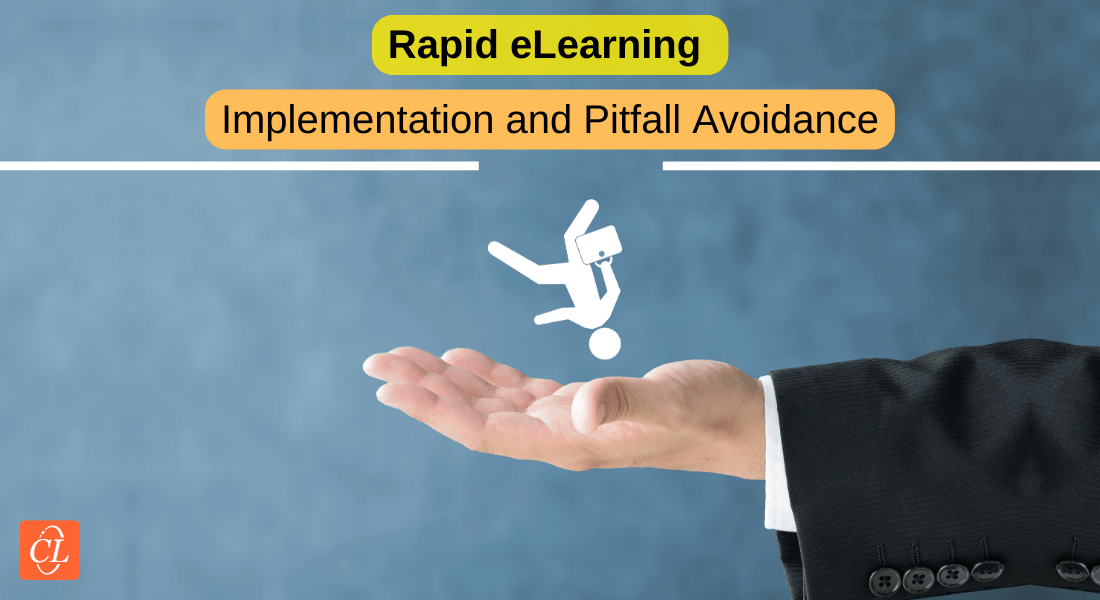Best Practices for Rapid eLearning Development [Infographic]
Want to ensure high-impact, top-quality eLearning courses? Then you need to know the best practices for rapid eLearning development. Read on to find out.

In the fast-paced world of business, timing is of the essence. It separates the winners from the rest. Here's a small example to elaborate. Imagine a company on the brink of launching a groundbreaking feature only to discover that their competitors have been a step ahead of them and have already launched it. That's hurtful and bad for businesses.
However, in their response, they decided to accelerate the project, launch the feature sooner than initially planned, and train their workforce on the new feature in the meantime. But wait! Training the workforce quickly would mean rapid development of the training courses. So how can they do so? Well, this is where rapid eLearning development tackles the bull by the horn.
To ensure the best results, you need to follow the best practices for rapid eLearning development. And this blog covers just that along with highlighting the importance of rapid eLearning development in corporate training. So without any delay, let’s begin.
Need for Rapid eLearning Development in Corporate Training
Traditional, time-consuming methods to design and develop training courses are done and dusted. Today’s quick, fast-paced world of business calls for effective, speedy, and innovative solution. Rapid eLearning development is the answer to this necessity. Let’s understand in detail.
Offers Agility in Adapting to Change
Constant change and innovation are the hallmarks of the new-age business world. So whether it's adapting to new technologies, such as AI, following industry regulations, or keeping up with market trends, you need be prepared in order to stay ahead in the competition. This requires quick and effective training solutions.
Rapid eLearning development enables you to create and deploy training programs quickly. It enables you to address current organizational needs and achieve business goals successfully. This helps you ensure that your employees are equipped with the latest knowledge and skills.
→ Download Now: How L&D And Business Can Align to Conquer The Future Of Work
Ensures Continuous Learning
Employees are often stretched thin with their daily tasks. This makes it difficult for them to set aside some specific time for training. However, rapid eLearning development comes in handy as it leverages different types of instructional design strategies and training methods to make learning more accessible and flexible. This ensures that your employees can engage in continuous learning without disrupting their workflow.
Addresses Skill Gaps
Identifying and addressing skill gaps is the key to maintain a competitive edge. And rapid eLearning development can help. It allows you to take quick action and attend to the evolving skill requirements of your employees. You can easily deploy targeted training modules to bridge skill gaps and ensure your workforce is up-to-date on latest trends and knowledge.
Promotes Cost-Efficiency
Traditional training methods often come with hefty price tags and lengthy development cycles. But rapid eLearning cuts down the extra fluff and focus on delivering relevant content. It also reduces development time by leveraging rapid eLearning authoring tools without compromising the content quality. This not only saves resources but also allows you to reallocate your budgets more efficiently.
Best Practices for Rapid eLearning Development
In The End!
Rapid eLearning development is great approach to meet the quickly-changing learning needs of modern-day business world. You can make the most of it by incorporating the best practices shared in this blog and achieve your business goals. If you wish to go beyond rapid eLearning development and explore how L&D and business can align to deliver successful results, the eBook below is just for you. Give it a read and find out!







